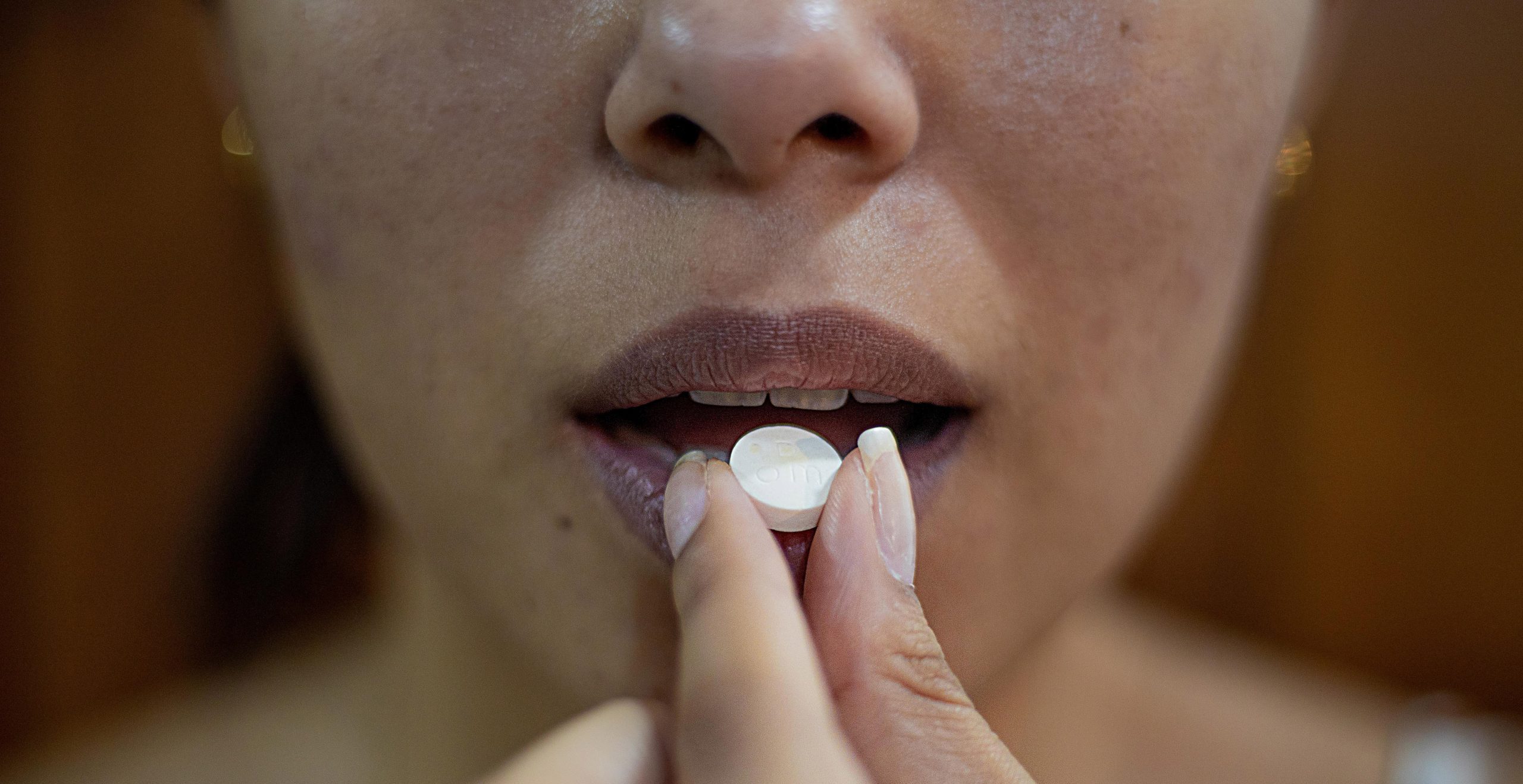 Nada Khan is an Exeter-based NIHR Academic Clinical Fellow in general practice and GPST4/registrar, and an Associate Editor at the BJGP. She is on Twitter: @nadafkhan
Nada Khan is an Exeter-based NIHR Academic Clinical Fellow in general practice and GPST4/registrar, and an Associate Editor at the BJGP. She is on Twitter: @nadafkhan
Medication shortages are no new thing. It’s not uncommon to see alerts from our friendly pharmacy team warning us of shortages in antidepressants, or medications such as H2-antagonists. But I can’t think of a more prolonged or complex shortage than what we have seen with hormone replacement therapy (HRT). The most recent HRT shortage relates to Oestrogel, but years of HRT shortages have left patients frustrated and GPs scrambling to find alternatives. Recent newspaper headlines warned that some women are turning to the black market to access HRT medications. How have we ended up here, and what should we as clinicians be doing about it?
NICE guidance published in 2015… recommended prescribing HRT as first line treatment for patients under the age of 60 with menopausal symptoms.
HRT used to have a relatively unfavourable reputation. This was in some part due to early findings from the Women’s Health Initiative study and confusion over using combined (oestrogen and progesterone) HRT and the risk of stroke, breast cancer and thrombosis.1 NICE guidance published in 2015, however, recommended prescribing HRT as first line treatment for patients under the age of 60 with menopausal symptoms.2 Given the increasing coverage of menopause in the media and societal shifts in prescribing and taking HRT, rates of HRT use have increased substantially; OpenPrescribing data demonstrates an increase of over 200,000 prescriptions for HRT medications from January 2017 to January 2022.3
So, whilst women are increasingly requesting HRT to help manage symptoms of their menopause, and GPs gain confidence in prescribing for different menopausal symptoms, manufacturers have said that this pressure has caused a supply and demand problem. Besins Healthcare, which manufactures Oestrogel, blames the ‘exceptionally high demand’ for Oestrogel over recent months for a depletion of stocks4. Pharmaceutical companies need to forecast which medications will be in demand 12-18 months into the future,5 but have not been able to keep up with the demand in HRT. In some ways this is puzzling, especially as international supply shortages of HRT have been ongoing since 2018; and it is unclear when they will ease.
Fear not; the British Menopause Society regularly publishes updates on HRT supplies, and provides guidance on HRT preparations and equivalents…
Where does that leave clinicians? At the coalface, shortages in HRT mean that the scripts we issue for specific HRT preparations might not be available to the women who need them. And this is a problem; the effects of menopause can be debilitating and for many women, HRT is part of the solution to navigating this stage of their reproductive health. There are plenty of alternatives to each specific HRT mediation, and women should be offered these medications. For some clinicians, prescribing HRT can be a murky challenge; there are numerous preparations, and it can be difficult to work through equivalent preparations. Fear not; the British Menopause Society regularly publishes updates on HRT supplies, and provides guidance on HRT preparations and equivalents,6 which is a handy tool when dealing with prescription queries. I have personally found the advice of pharmacists exceedingly helpful when prescriptions bounce back. However, like other hormonal preparations (contraceptives spring to mind) some women will prefer specific brands to others. Menopause is a time of life where individualised care must take precedence; working with a patient to find a solution or alternative formulation that suits them.
It is a good thing that we are all talking about menopause more, and although it is frustrating that HRT availability is yet to fully catch up, it is a problem we can try to solve through working through the issues openly with women and supported, but creative prescribing.
References
- Robinson L. HRT: The history: Women’s Health Concern; 2020 [Available from: https://www.womens-health-concern.org/help-and-advice/factsheets/hrt-the-history/.
- Menopause: diagnosis and management. 2015.Contract No.: NICE guideline NG23.
- Prescribing O. 6.4.1: Female sex hormones and their modulators[Available from: https://openprescribing.net/bnf/060401/.
- British Menopause Society update on HRT supply 2022 [Available from: https://thebms.org.uk/news/british-menopause-society-update-on-hrt-supply/.
- Backhouse T. HRT: Why are some women finding it so hard to access Hormone Replacement Therapy? Women’s Hour: BBC Radio 4; 2022.
- Society BM. HRT preparations and equivalent alternatives 2022 [Available from: https://thebms.org.uk/wp-content/uploads/2022/03/15-BMS-TfC-HRT-preparations-and-equivalent-alternatives-01D.pdf.
Featured image by @danilo.alvesd on Unsplash







Prescribing before The 2002 HRT crash
I was a prescriber of HRT in the 1990’s before the massive decline due to scientifically proven health risks in 2002 . A new generation of GP clinicians will now have to take up HRT prescribing due to pressures from celebrity endorsement and muddled NICE guidelines. I have memories from this past when once again oestrogens were the popular female anti-ageing drugs of the time.
On the positive side HRT provided excellent relief from night flushes ( no other treatment is effective) and also symptoms of vaginal atrophy. I breathed a sigh of relief when a woman without a uterus chose to have HRT to relieve her symptoms as this bypassed endometrial hypertrophy and endometrial cancer issues. Erratic vaginal bleeding could be problematic in younger patients, with intact uterus around the menopause, so combined HRT oral preparations were most prescribed. This was said to reduce endometrial hyperplasia risks. This gave a monthly to three monthly light bleed so sanitary protection was needed . In fact oestrogen dermal applications were unpopular and rarely added to the repeat prescription list at my practice. A Mirena IUS as contraceptive was sometimes used to reduce any risk of endometrial thickening and provided contraceptive cover. Some private patients had oestrogen implants but there were examples of patients having supra-physiological levels due to to too frequent injections as symptoms returned earlier than the date of their next injection. There was no availability of endometrial thickness ultrasound in the 1990’s to GPs. Bone density scans which were available often showed poor bone density gain on HRT but excellent with the bisphosphonates
Some patients did very well on their HRT and preferred to remain on the medication with some well past 70 years. When the new scientific risks were spelt out most gave up the medication but of course still had to weather a period of hot flushes as a consequence of withdrawal. Those few who did not wish to stop had to sign a practice form saying that this was against current medical advice. Testosterone dermal preparations did not have a licence for female health conditions in my time so did not have to be considered as an add on to HRT.
Of course other patient health issues can muddy the HRT prescribing waters but this requires even more careful management. There was no doubt this was considerable extra work but was very useful in a targeted way.
I wish my modern day GP colleagues all the best as they add HRT once again to the GP prescribing task.
Nada Khan is an Exeter-based NIHR Academic Clinical Fellow in general practice and GPST4/registrar, and an Associate Editor at the BJGP. She is on Twitter: @nadafkhan
I recently wrote an article here on BJGP Life about HRT shortages. The current issues with HRT supply are attributed to an imbalance between supply and demand, with a marked rise in the number of women using HRT. Part of that increased demand has been attributed to a TV documentary about the menopause released a year ago by Davina McCall, which has led to what some call the ‘Davina effect’. The follow-up to last year’s documentary aired recently on Channel 4, leading to industry and government warnings about further HRTshortages driven by demand.
What I find interesting about this kind of high-profile programme is the impact that it has on patient behaviour, and the resulting consequences for healthcare professionals. Celebrities influence how people think, and act. Jade Goody, a British reality TV star, died of cervical cancer in 2009, and the publicity surrounding her death is thought to have increased attendance at cervical cancer screening (the so-called ‘Jade Goody effect’).1 Similar short term effects were seen in increased rates of breast cancer screening following Kylie Minogue’s diagnosis of breast cancer (the ‘Kylie effect)2 and Angelina Jolie’s decision to have a risk-reducing mastectomy in the context of BRCA1 status.3 The makers of the more recent Davina McCall documentary say that they expect ‘another wave of women to go to their GPs’ asking about HRT. But what about the impact of these high-profile cases, or documentaries on us in general practice, and how do we as GPs respond?
Unfortunately, a high proportion of women will never seek help for their symptoms around perimenopause and menopause.4 Of those women who do seek help, the majority will see their GP as a first port of call. Let’s assume that, as a result of a high profile documentary on menopause, more women in the UK will try to speak to their GP about starting, or adjusting their treatment during the menopause. Is this in itself, a good thing? Vasumathy Sivarajasingam wrote here in BJGP Life about breaking the silence around the menopause, and makes the point that we don’t speak enough about the menopause with our patients, or offer HRT when its potentially indicated. While raising the profile of the menopause can hardly be seen as a bad thing, some in the health care profession find this kind of programme difficult, especially if coverage suggests that some GPs are incompetent or dismissive of women’s concerns.
My own scanning of social media and discussions with colleagues led me to categorise responses to Davina McCall’s programme as below:
– GPs who feel that this kind of programme portrays untruths and is ‘GP-bashing’. These GPs might feel defensive, or angered by anti-GP sentiments in the media or from patients.
– GPs who feel that they are effective advocates for their patients going through the menopause. These GPs might feel vindicated by their actions.
– GPs who feel that they want to advocate for women through the menopause and welcome this kind of programme. These GPs might feel a need to increase their knowledge in this area given that they expect to have more conversations with patients about the menopause and HRT.
Our alignment with one or more of the above groups might be fluid or overlapping, but perhaps it is worth reflecting on our own responses. Negative stereotypes of GPs are entrenched in the media and can contribute to emotional exhaustion and subsequently impact decisions about whether to leave practice.5 Barry and Greenhalgh suggest that we should rise to the challenge, and develop our own counter-narratives when GPs are depicted in the media as clinically incompetent.6
Patients might have questions about the information provided in Davina McCall’s programme, and The British Menopause Society has produced a response which provides some information about indications for HRT, prescribing testosterone and specialist clinics. Can we harness the power of celebrity? Celebrity stories can influence health seeking behaviours, and using these narratives may be an effective way to communicate with patients about health promotion.7 At the very least it’s worth acknowledging the impact of high-profile stories on our patients, the portrayal of general practice in the media, and ultimately, our own responses and actions as a result.
References
Lancucki L, Sasieni P, Patnick J, Day TJ, Vessey MP. The impact of Jade Goody’s diagnosis and death on the NHS Cervical Screening Programme. J Med Screen. 2012;19(2):89-93.
Kelaher M, Cawson J, Miller J, Kavanagh A, Dunt D, Studdert DM. Use of breast cancer screening and treatment services by Australian women aged 25-44 years following Kylie Minogue’s breast cancer diagnosis. Int J Epidemiol. 2008;37(6):1326-32.
Evans DG, Barwell J, Eccles DM, Collins A, Izatt L, Jacobs C, et al. The Angelina Jolie effect: how high celebrity profile can have a major impact on provision of cancer related services. Breast Cancer Res. 2014;16(5):442.
Constantine GD, Graham S, Clerinx C, Bernick BA, Krassan M, Mirkin S, et al. Behaviours and attitudes influencing treatment decisions for menopausal symptoms in five European countries. Post Reprod Health. 2016;22(3):112-22.
Sansom A, Terry R, Fletcher E, Salisbury C, Long L, Richards SH, et al. Why do GPs leave direct patient care and what might help to retain them? A qualitative study of GPs in South West England. BMJ Open. 2018;8(1):e019849.
Barry E, Greenhalgh T. General practice in UK newspapers: an empirical analysis of over 400 articles. Br J Gen Pract. 2019;69(679):e146-e53.
Marlow LA, Sangha A, Patnick J, Waller J. The Jade Goody Effect: whose cervical screening decisions were influenced by her story? J Med Screen. 2012;19(4):184-8.
Featured image by Francisco on Unsplash